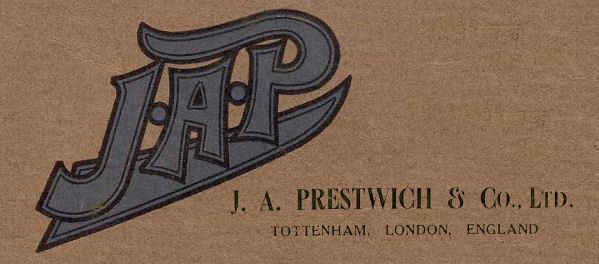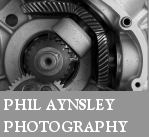


The new 250 c.c J.A.P. unit. It has an oil spray for the valve stems, the die-cast "fir cone" valve cap radiators, heavy radiating fins, and an improved timing cover.
Crank case and simple timing gear of the 350 c.c. latest type single cylinder model.
Front driving side view of the 350 c.c. engine, showing the mild steel magneto bracket bolted to the web between the crank case lugs.
A V twin of 500 c.c, composed of two 250 c.c. single cylinders; the exhaust valve lifter is of the external variety, once popular on all J.A.P. products.
The 550 c.c. J.A.P. single cylinder. Note the die-cast "fir cone" valve cap. radiators, the new position of the sparking plug, and the oil spray for the valve sterns.
A big twin sports model, specially suitable for speed mounts. It has roller bearing big ends, and ball bearing mainshaft.
ENGINES FOR ALL REQUIREMENTS - Advance Details of 1922 Models
THE full range of J.A.P. engines for 1922 will consist of no fewer than ten different models. The makers, J. A. Prestwich and Co., Ltd., Northumberland Park, Tottenham, London, N.17, are particularly anxious that their engines should be known not by their horse-power, as this, of course, is an unsatisfactory term, but by their cubical capacity measurements. The range will be the 250 c.c, 293 c.c, 350 c.c. standard, 350 c.c. sports, 550 c.c, 500 c.c. twin, 680 c.c. twin, the 986 c.c. standard, and the 986 c.c. sports; there is also the 986 C.C; water-cooled twin. Several of these are completely new models. Take, for example, the 350 c.c. sports model, which came into being just before the T.T. races. Unlike several other motor cycle engine manufacturers, those responsible for J.A.P. engines have pinned their faith to the side-by-side valve layout, and have obtained wonderful successes during the past year.
A Long Stroke 350 c.c.
The 350 c.c. sports engine has a bore and stroke of 70x90 mm., and it is now fitted with an oil spray device fixed over the relief valve, consisting of a pipe with a flattened head, and, on each side of the head, are two narrow openings, through which oil is sprayed on to the valve stems. It would be thought at first that this idea, though excellent, would be rather messy, but very little oil issues therefrom, only just enough to moisten the valve stems. The illustration of the engine will show the multiplicity of the radiating fins and the die-cast aluminium "fir cones" attached to the valve caps which serve to dissipate the heat. The position of the sparking plug is to the rear of the inlet valve, a position which has been found after careful experiment.
An engine, with the sparking plug fitted in the standard position, namely, the inlet valve cap, have somewhat inferior results, but when the plug was moved to the new position the engine ran for ten minutes on full load and gave increased power. The test was purposely made with unsatisfactory plugs. The new engine has a roller bearing big end and ball bearings on the pulley side. It is also fitted with a new and more robust type of timing gear. It will be seen that the timing gear case is circular and the magneto chain cover forms part of it, while the platform to which the magneto is attached is of mild steel and is bolted on to a lug on the crank case. When used for competition purposes, an aluminium piston is fitted, but for general touring work a cast iron piston is supplied. Both these are of standard design. The gudgeon pin is held in the connecting rod and rotates in the piston, and it has been found that this system is quite satisfactory, even though, when an aluminium piston is fitted, no bushes are used.
Big Single for Sidecar Work.
The new 550 c.c. engine follows similar lines, and the sparking plug position is the same. The bore and stroke of this engine are 85x95 ram., and it is of the low compression variety. The cylinder has a number of fins cast on it situated close together so as to dissipate the heat adequately, while the new timing gear (similar to the 350 c.c. type) is fitted; the big end has a roller bearing and a ball bearing is used on the pulley side. The piston is of cast iron, and the flywheels are very large.
Another new engine which will attract a number of motor cyclists is the 986 c.c. sports model big twin ; this is provided with valve oil spray similar to the smaller engines previously described. The radiating fins have been specially cast to keep heat from the valve chest, and thaiplug xxx is similarly arranged, where it is cooled by the incoming gases. The size of the ports is also a point worthy of special remark. The valves are 1 7/8th in. in diameter, and 1 3/4 in. exhaust pipes are fitted. Not only are the big ends of the roller pattern, but ball bearings are used on both sides of the mainshaft. The makers guarantee that this unit will do eighty miles an hour.
The 250 c.c. T.T. Engine.
A review of the new J.A.P. models cannot be concluded without reference to the 250 c.c. engine which this year won The Motor Cycle Cup in the T.T., the Grand Prix, all Class A records, won its class in the 500 Miles Race, the Gaillon Hill-climb, and the recent world's records in the Paris Speed Trials. It is fitted with side-by-side valves, and it is hoped that it will attain eighty miles an hour. Such a speed from a 250 c.c. single-cylinder is almost incredible, more so since it is equal to the guaranteed speed of the big 8 h.p. twin-cylinder sports model already referred to.
10,000 Revs. per Minute.
Although 80 m.p.h. may seem a vain hope, the makers nevertheless are ready to demonstrate that this wonderful little 250 c.c. engine is capable of turning over at the hitherto unthinkable speed of 10.000 r.p.m.
There is also a new 550 c.c. sports model, which has one cylinder similar to those on the twin-cylinder sports model, large-valves, ball bearings on both sides of the engine, and roller bearing big ends. The 500 c.c. twin is another attractive proposition, and is equipped with two 250 c.c. cylinders, 64.5x76 mm. It is also worthy of mention that the standard 8 h.p engine has been improved, the cylinders having a larger number of cooling fins situated closer together and roller bearing big ends.
The Motor Cycle, November 10th, 1921. p575